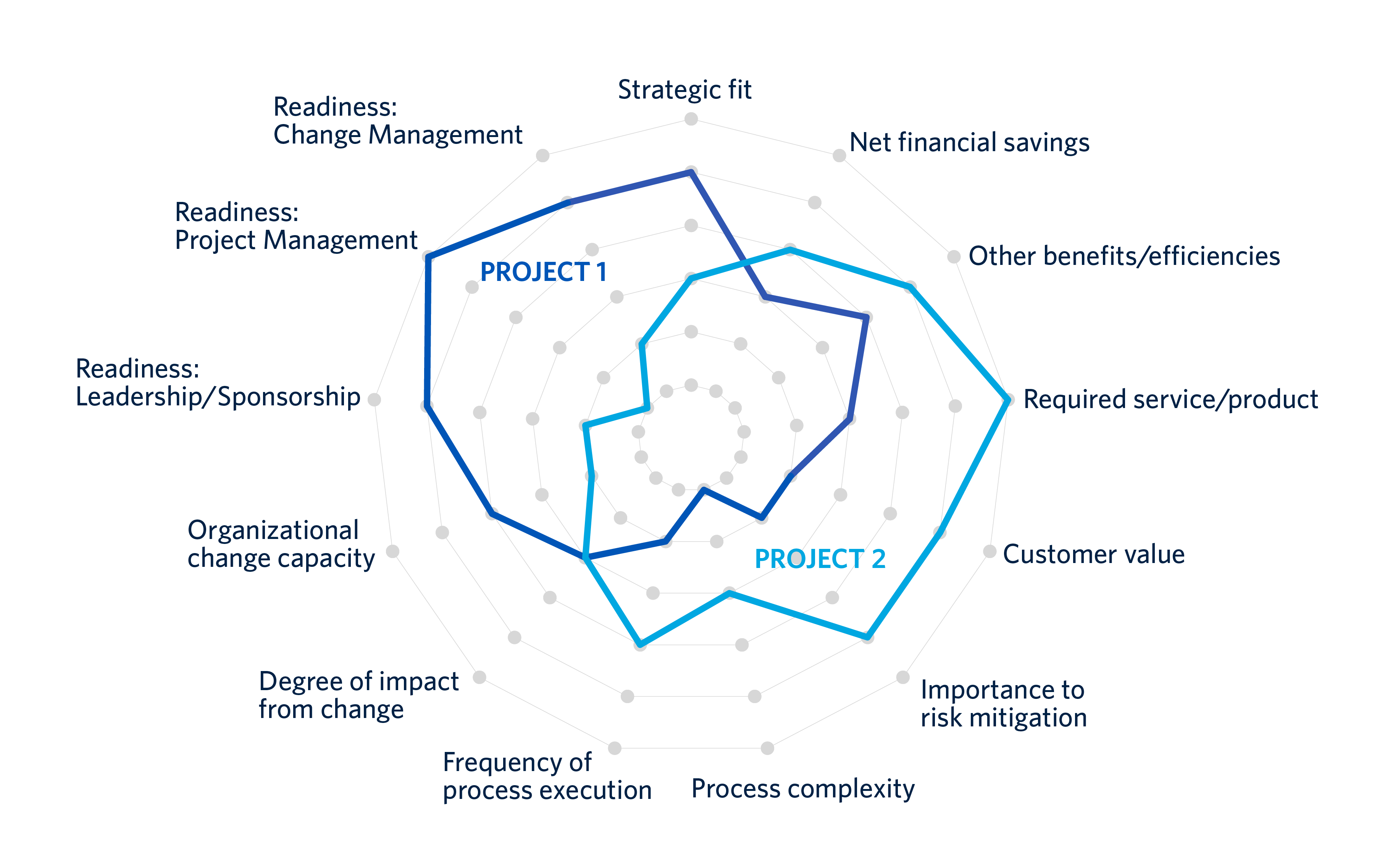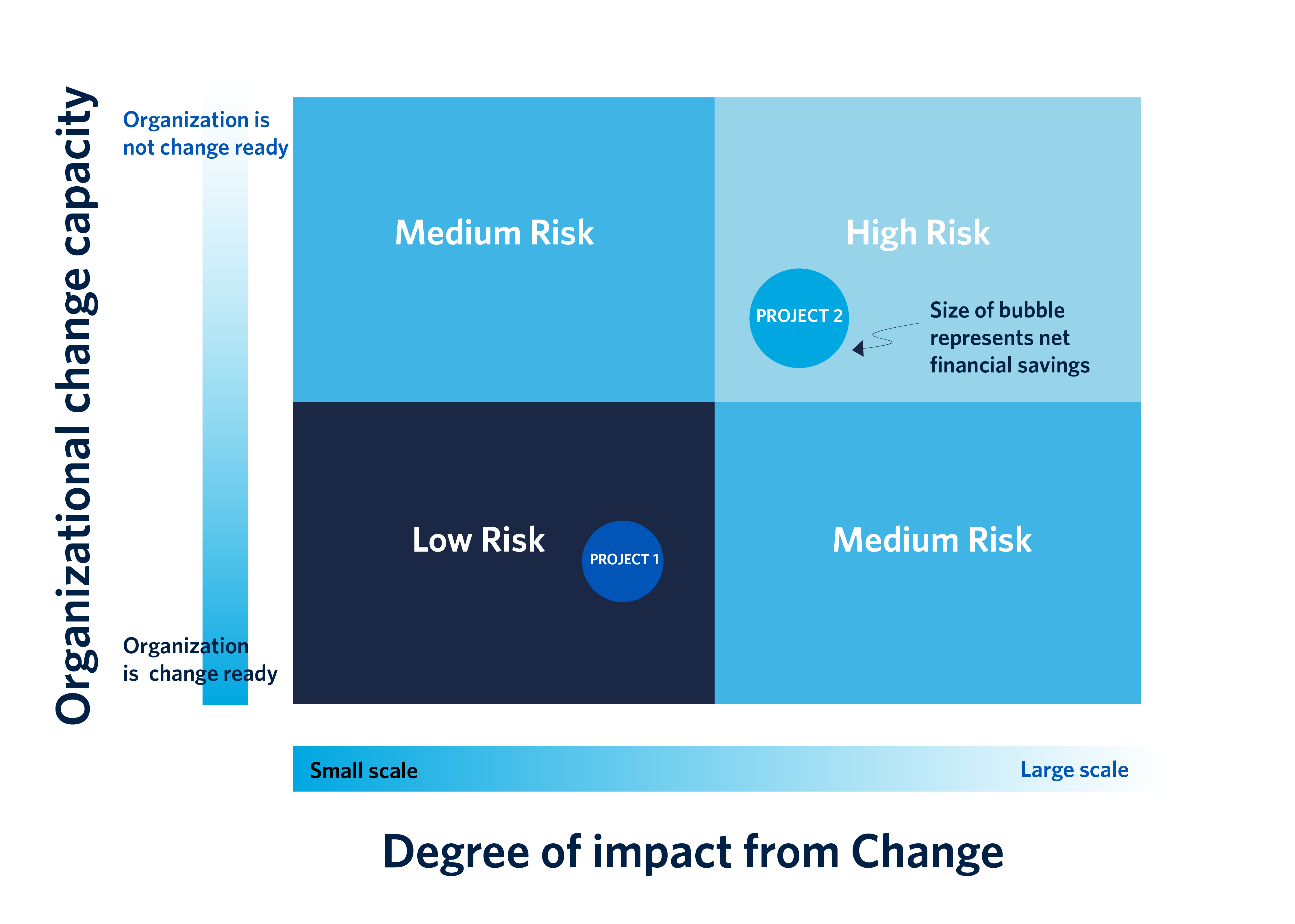How does it work?
There are many competing projects in an organization as large and complex as UBC and having a well-defined prioritization process ensures that we are doing the right work, in addition to doing the work right.
Once your project has been submitted via our Project Intake Form and reviewed by our team, it will then follow a prioritization process in order for our Governance Committee to determine the most efficient way for us to allocate resources.
Our process will ensure that:
- The project aligns with UBC’s strategic goals
- A business case has been developed to confirm funding is secured for the project
- Impacted operations are also properly funded and aligned with UBC’s goals
- A project manager is assigned to the project
- An operations manager is assigned to sustain operations after project delivery
- Communication to stakeholders is properly planned
- Change management is considered as part of the project
Project Prioritization Matrix
Governance, which is comprised of senior leaders who represent stakeholder groups across the university, will evaluate and score your project based on the following set of criteria:
Benefits
- Strategic fit: What is your project’s link to UBC’s strategic goals?
- Net financial savings: Are there net financial savings generated?
- Other benefits/efficiencies: What are other qualitative benefits, such as increased customer satisfaction, productivity, or employee morale?
- Required service/product: Is your initiative mandatory due to compliance, legal, or fiscal requirements?
- Value to the customer: Does this project enhance the service offered to the customer?
- Importance to risk mitigation: Will your project help mitigate risk, and what is the impact of doing nothing?
Process
- Process complexity: How complex is the process in scope?
- Frequency of process execution: How frequently is the process in scope executed?
Change Management
- Degree of impact from change: Is the proposed change small and incremental, or large and disruptive?
- Organizational change capacity and maturity: Is your unit change ready or change resistant?
- Readiness – leadership/sponsorship: Are leadership and sponsorship defined, and are they ready to actively and visibly lead and sponsor these changes?
- Readiness – project management: Is a project manager assigned, and is there a structured project plan for managing tasks, resources, and budgets?
- Readiness – change management: Is there an effective Change Management plan in place, and allocated Change Management resources?
Project Evaluation Examples
The following examples illustrate how projects will be measured and compared using our assessment tools.
Project Prioritization Radar Chart
The Project Prioritization Radar Chart compares projects against each other based on our metrics.
In this example, while Project 2 scores better in terms of overall benefits, such as net financial savings, and customer value, it doesn’t score as well in readiness. Since it is not ready to launch yet, Governance may decide to go ahead with Project 1.

Change Management Assessment Grid
The Project Change Management Assessment Grid evaluates the unit’s change capacity against the project’s degree of change impact, using the three key metrics:
- Net financial savings
- Degree of impact from change
- Organizational change capacity
In this case, Project 2 presents a better business case with larger net financial savings — indicated by the larger bubble. However, it has a higher degree of change impact in a unit with low change capacity — demonstrated by its significantly higher positions along both axes on the diagram. This indicates that Project 2 will require additional change management resources to deal with a higher organizational risk. If these resources are not in place, Governance may move forward with Project 1 instead.
